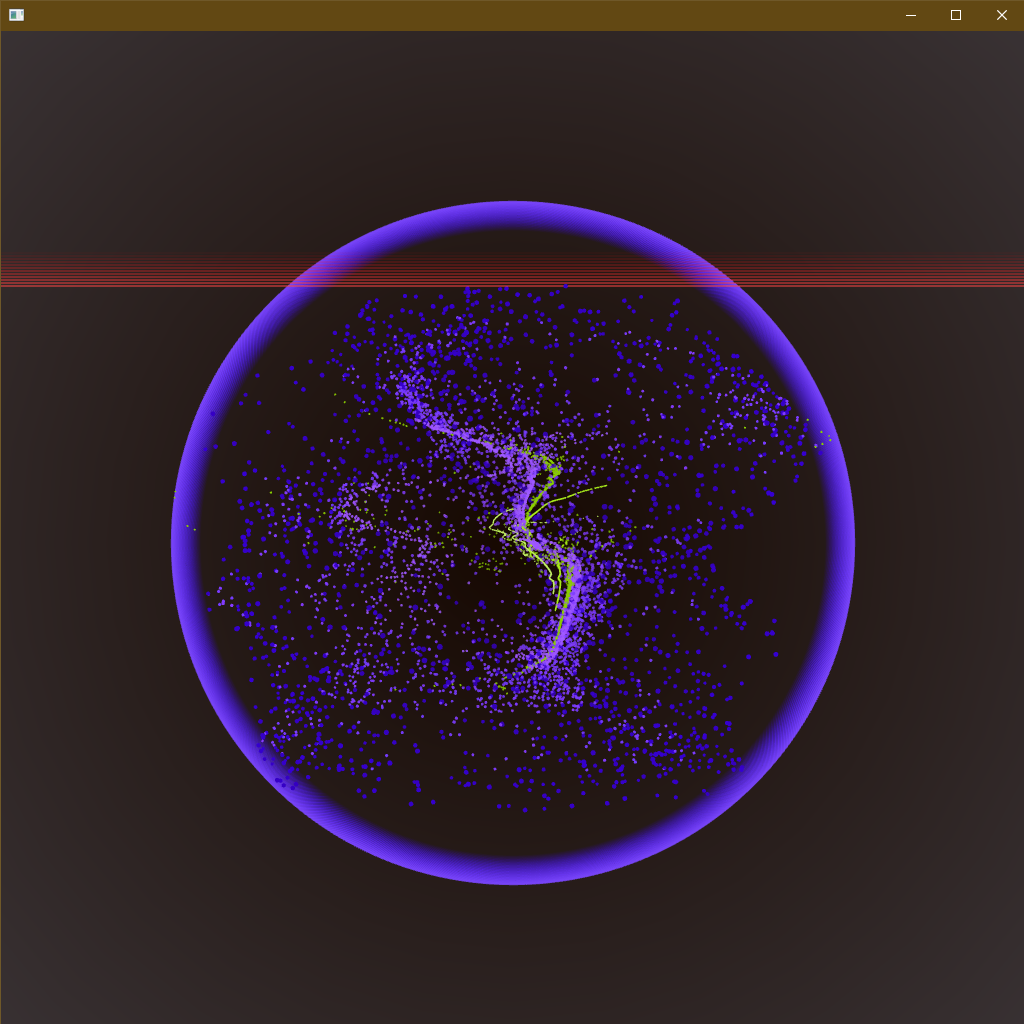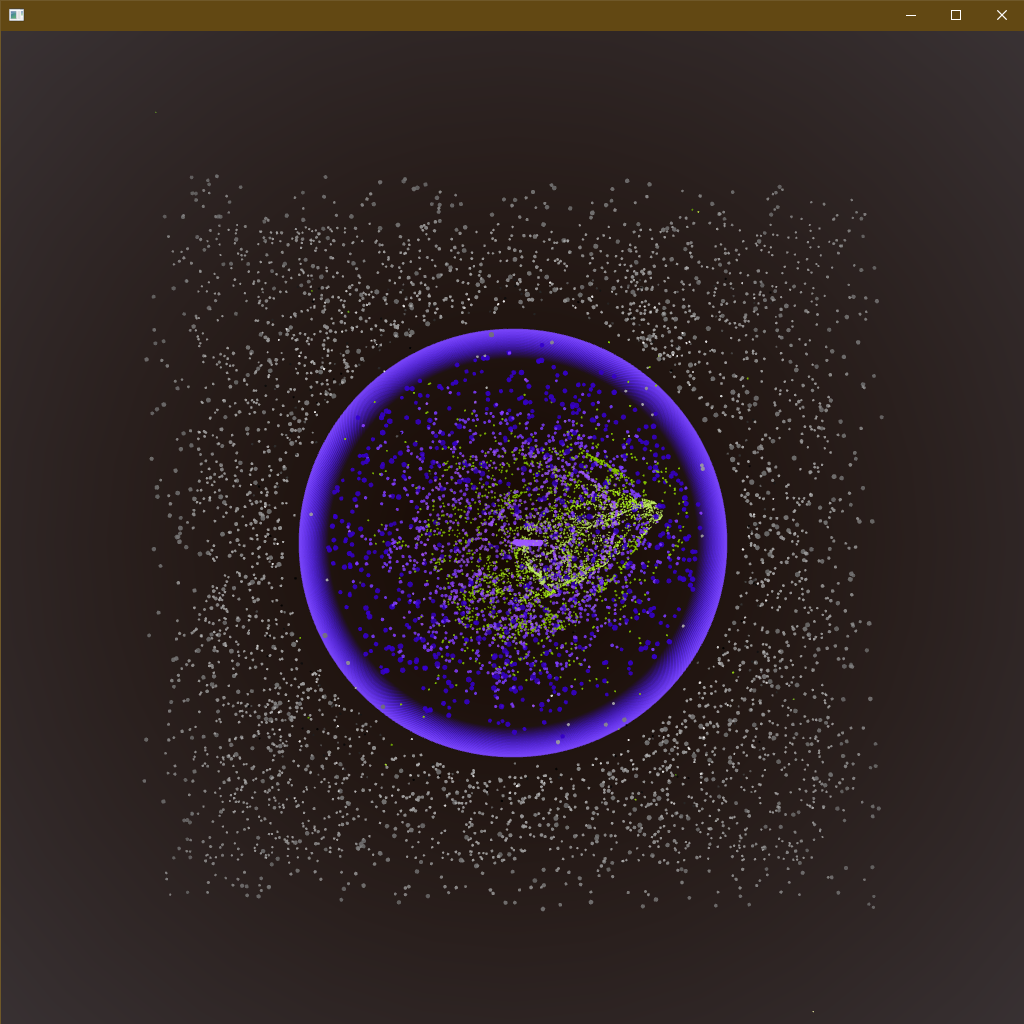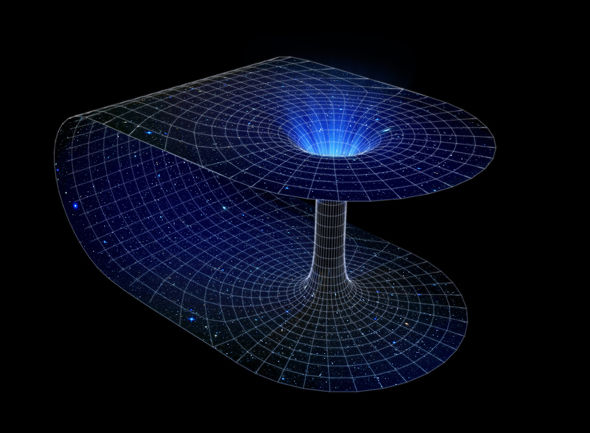Portal Quest
A projection piece exploring the aesthetics and role of portals in sci-fi/fantasy narratives.
produced by: Pietro Bardini
Introduction
This work uses an evolving particle system to explore the aesthetics of portals in popular culture. It's an experiment in visual composition which aims to animate and visualize the opening of a portal on a projected surface. The stylistic elements are borrowed from 1980's sci-fi GUI and portal-quest sci-fi narratives such as Star Gate and Hyperion Cantos.
Portal Quest screenshots below:
Concept and background research
In popular culture, portals are represented as doorways that connect two separate locations in space and time. Portals are usually the product of a wormhole and they are used to exchange matter between the locations. Sometimes portals can cause havoc by ripping the space-time continuum, or they can lead to a median stratum - a middle point nowhere between the two spaces.
Portal Quest visualises a portal coming into existence. As its size grows so does it influence on the system - the portal here acts as a black hole, gorging on stars until they are all enclosed in it. However, the portal does not transfer them to a new location but it mutates their physical properties. The greyness of the stars turns into fluorescence and their gravitational properties evolve to fit the new dimension.
The portal is viewed from a GUI that borrows from 1980's sci-fi computer interfaces. The simple vector graphics show red lines sieving the particles through the portal. From large to small, at each pass, particles are sent to the dark side of the portal.
When the portal is finally empty, tentacular arms grow from its insides, slowly dismantling the fabrics of the universe.
Technical
The piece is made up of four scenes, however, it was programmed to smoothly move between these without drastic cuts to separate them. This choice allowed me to achieve a more cohesive narrative and highlighted the role of the portal within the animation. This was done by only having one FBO which drew a multi-layered class system.
The universe is a result of 12000 particles drawn inside a base class. This class included three variations on their behaviour, which depended on their size and position. A parent class was used to control the behaviours and to draw the animations for the portal and the filtering red lines. Finally, this parent class was drawn to the FBO.
Future development
This project could be extended by including the other side of the portal. What happens to the particles once they go through time and space? What is waiting on the other side?
Self evaluation
The project successfully drew the portal like I was planning to, the particles behave in an interesting way and I am happy with the resulting composition.
However, as the particle system is large it resulted quite CPU-intensive, to fix this I would have worked to remove unused particles more efficiently. Also, due to this, the recording of the rendering is a bit jittery. However, a filmed recording of the physical projection would have achieved a smoother result.
References
This work used some material from the Open Framework's particle example, however, this was changed and implemented to best fit my needs. No other code was used in this instance.
The 4 Categories of Fantasy: Applying Some Ideas From RHETORICS OF FANTASY by Farah Mendlesohn
Image references below.






































































